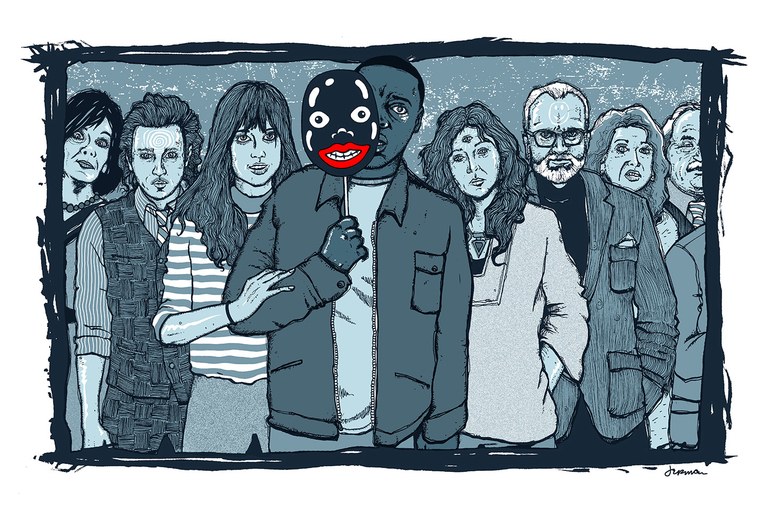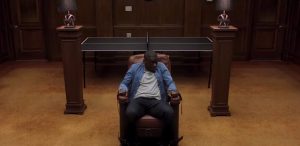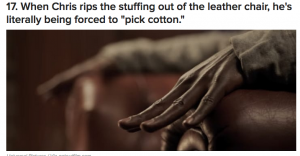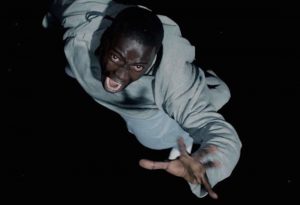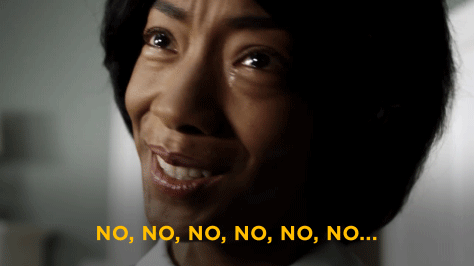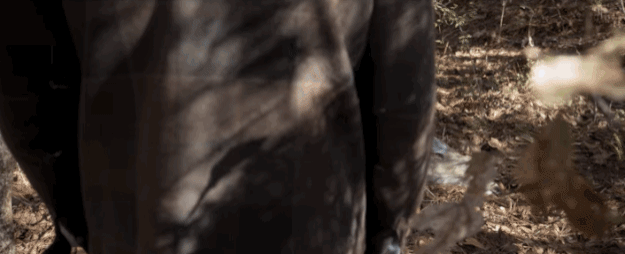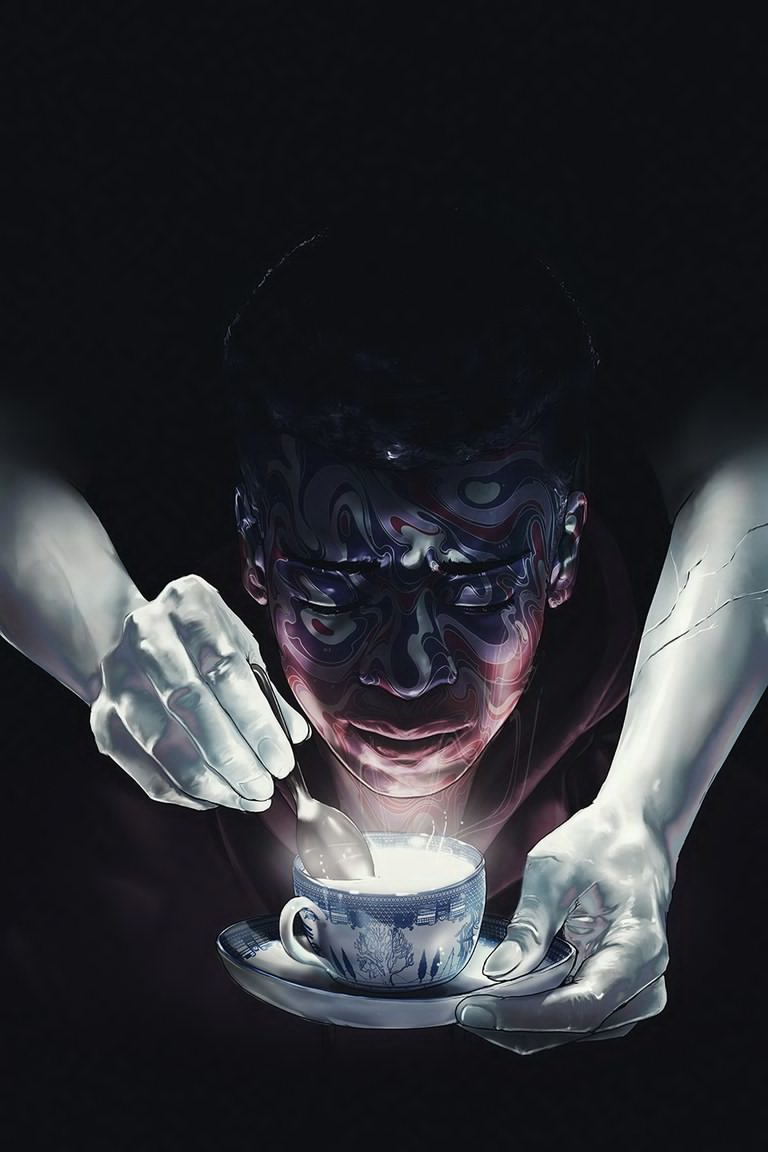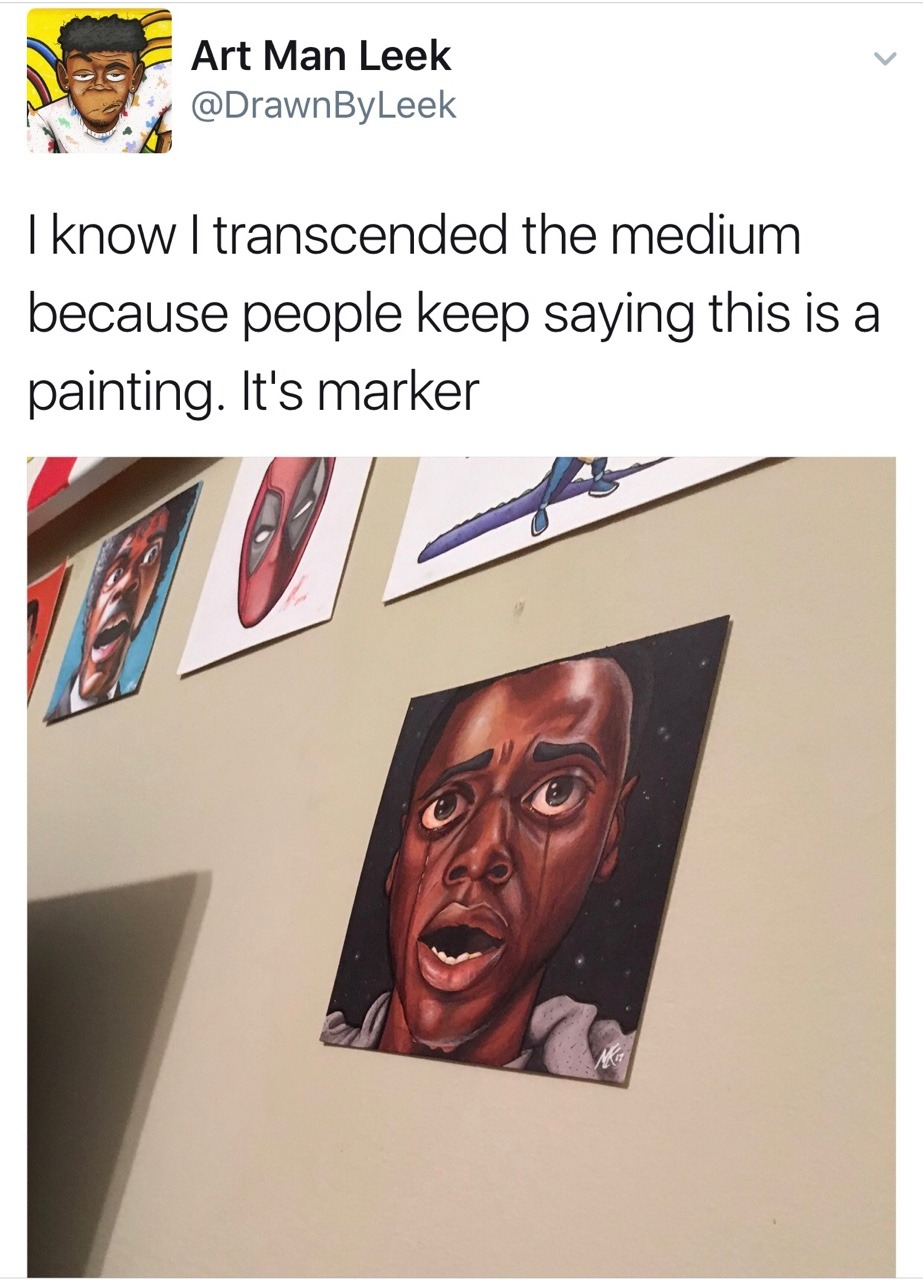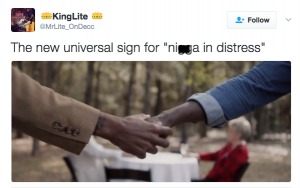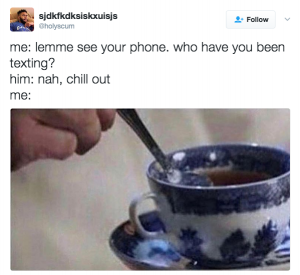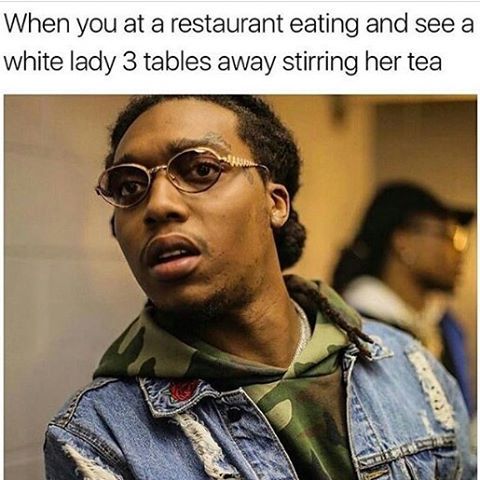One consistent theme throughout the film is it’s allusions to American slavery in both overt and obscure ways. Some scenes evoke the submissive relationship of a servant to their master, while others illuminate the insidious ways in which slavery has informed U.S. race relations, as well as the expansion, proliferation and dexterity of heteropatriarchy. While not comprehensive, below are a few key moments in which allusions to slave time were particularly striking:
Scene #1: The sizing up of the Chris’ physicality when the family first sits down to dinner:
Jeremy: Because with your frame and your genetic makeup … if you really pushed your
body … And I mean really train. No pussyfooting around. You’d be a fucking beast.
…
Missy: What have I missed?
Rose: A whole bunch of nothing. – We just talking about sports.
Scene #2: … And when he is introduced in the ‘party’ hosted by the Amitage’s
Neighbor #1: Oh, How handsome is he? … Not bad, huh Nelson? So, is
it true? Is it better?
Neighbor #2: Fair skin has been in favor for the past what, couple of hundreds of years…
But now the pendulum has swung back. Black is in fashion.
Scene #3: Most notably, the auction, which is when the audience first discovers that the party is really a silent auction for Chris’ body
Dean: How about sparklers and bingo?
Scene #4: When the mission of the The Order of the Coagula is explained
Roman: You have been chosen because of the physical advantages you enjoyed your entire lifetime. With your natural gifts and our determination we could both be part of something greater. Something perfect.
Scene #5: When the mission of the The Order of the Coagula is explained (continued)
Rod: They’re probably abducting black people, brainwashing them and making them Slaves… or sex slaves, not just regular slaves, but sex slaves and shit. See I don’t know if it’s the hypnosis that’s making them slaves or whatnot…but all I know is they already got two brothers we know and they could be a whole bunch of brothers they got already.
Scene #6: When the mission of the The Order of the Coagula is explained (continued)
Jim Hudson: A sliver of you will still be in there somewhere. Limited consciousness. You’ll be able to see and hear … What your body is doing, but your existence will be as a passenger. An audience. You will live in …
Chris: The Sunken Place.
___
Throughout the course of this movie, and especially in the above scenes, we learn that the relationship between Rose and Chris is not the romance it first appeared. Chris is not Rose’s first ‘Black boyfriend’ as she claimed. Scrolling through the list of latest NBA drafts, we learn that Rose exclusively targets black men. Wrapped up in the her rationale for that target pool are assumptions about black men’s physicality – their youth, athleticism, able-bodiedness, muscularity, health, virility, etc. She has a type in the truest sense of the word. The Armitage experiment is predicated on their full subscription to the stereotypes of Black men. More subtle however lies assumptions about their mental fortitude, or lack thereof. Rose is situated within the Armitage family tradition, the conception of the Order of the Coagula by patriarch Roman Armitage. This secret evil cult promises white people a new [black] body to host their conscious and prolong their existence on Earth. In order for mission to be constructed as a morally sound and justifiable endeavor, Blackness has to be cast in the certain light, and both the black body and mind has to be divested of many of the attributes that equate it with all the humanity, value, and competence of those of a white person’s. The following analysis will draw from the United States’ history of slavery while utilizing feminist theory to unmask some of these assumptions.
Dean Armitage presides over the auction and he’s nothing like the easy going, forgivably ignorant character that we are first presented with in the beginning of the movie. Dean proposes a casual game of Bingo and initially, this appears to be fitting with his character (it’s worth mentioning that Bingo is an American pastime commonly associated with elderly white people). Throughout this entirely silent scene however, we see Dean for who he really is – a cold, decisive, mastermind, a perpetrator of an insidious with even more sinister underpinnings. As the camera zooms out from Dean’s face to his hands to his body, and finally captures the entire pavilion, a golden-framed picture of Chris is revealed to the audience, and here the plot unfolds.
The hand gestures, the winning Bingo cards, the clapping when Jim Hudson appears to make the highest bid and win, all make this scene ostentatiously reminiscent of a slave auction. In similar fashion, slaves were property, merchandise, and were handled as such. They could be “sold, traded or inherited … abused, branded, bred, exploited or killed” (History.com, 2009). In the tradition of chattel slavery, slaves maintain their slave status for a lifetime, and any children born to them are also relegated to slave status. Why did Black bodies make good slaves? “In the early 17th century, European settlers in North America turned to African slaves as a cheaper, more plentiful labor source than indentured servants (who were mostly poorer Europeans)”(“Chattel Slavery.”, 2015). Slavery because a hugely economical practice and thus, slave owners devised a method to control and assert the power they created for themselves over slaves. Black bodies, and particularly black male bodies, were essentially machines for production.
Feminist theorists Judith Butler, Ferreira da Silva, Roderick Ferguson, Sojourner Truth, and many many more, place heavy emphasis on conceptualizations of the body in feminist theory. Therefore, to understand the nuances of micro- and macro-level aggressions Chris experiences throughout the entirety of Get Out, we first turn way back in time to American slavery to contextualize the Black body in its initial stages of existence in the United States.
Black bodies subverted conventional European understandings of beauty, decorum, cognition and sanctity. Therefore, there was no conception of black bodies as unequivocally human. “There is nothing sacred about Black … bodies … they are not off-limits, untouchable, or unseeable” (Guy-Sheftall, 2002). There were, and still are today, constant placed in close proximity to ape-like savages, and drawn as the inferior antithesis of the refined, civil, European man. And so the process begins. Europeans start out by construing conditions of black bodies as unnatural, exotic, inhuman, and then through chattel slavery, recreating the very conditions that cripple black bodies mentally, physically, and emotionally. As explained by Frederick Douglass, African American slave turned freedman, “My natural elasticity was crushed, my intellect languished, the disposition to read departed, the cheerful spark that lingered about my eye died; the dark night of slavery closed in upon me; and behold a man transformed into a brute!”
As less than human, black bodies become the subject of all manner of tests to extract their monetary value and utility. Described below is the sentiment of a [White] man present at a slave auction.
“He was a muscular fellow, broad-shouldered, narrow-flanked, but rather small in stature ;. he had on a broad, greasy, old wideawake, a blue jacket, a coarse cotton shirt, loose and rather ragged trousers and broken shoes. The expression of his face was heavy and sad, but it was by no means disagreeable, in spite of his thick lips, broad nostrils and high cheek bones. On his bead ·was wool instead of hair; his whiskers were little flacculent, black tufts, and his skin was as dark as that of the late Mr. Dyce Sombre or of Sir Jung Bahadoor himself. I am neither sentimentalist, nor Black Republican, nor negro· worshipper, but I confess the sight caused a strange thrill through my heart tried in vain to make myself familiar with the fact that I could, for the sum of nine hundred and seventy-five dollars become as absolutely the owner of that mass of blood, bones, sinews, flesh and brains, as of the horse which stood by my side” (“a Slave Auction Described by Russell.”, 1861).
Another testament goes further to describe the measures of evaluation for black bodies in preparation for slave auctions.
“…The negroes were examined with as little consideration as if they had been brutes indeed; the buyers pulling their mouths open to see their teeth, pinching their limbs to find how muscular they were, walking them up and down to detect any signs of lameness, making them stoop and bend in different ways that they might be certain there was no concealed rupture or wound; and in addition to all this treatment, asking them scores of questions relative to their qualifications and accomplishments..”(Doesticks, 1859).
“Colonial rule simultaneously involved racializing and sexualizing the population, which also meant naturalizing whiteness” (Alexander, 1994). Creating such distance between Black bodies, humanity and citizenship served to “ease white male guilt about the enslavement and oppression of Africans…” during times of slavery, and we see exactly the same notions operating in full effect in Get Out (Guy-Sheftall, 2002). Black bodies, the economic pivot of slave-plantation economy, were sexualized (Alexander, 1994) – Particular focus on black genitalia “reinforced the European connection between lasciviousness, sexuality, and animal passion among Africans in general…”(Guy-Sheftall, 2002). As in times of slavery, we see the neighbors take liberties with Chris’ body that I’d argue White people surely wouldn’t dare to take with other white people (Scenes 2 and 3 above). The script certainly alludes to it, but on scene he is poked, prodded and felt up. Having just been introduced to Chris, one woman even dares to ask Rose about their sex life and Chris’ genitalia. In these scenes, Peele is drawing from a long history with regards to black bodies.

